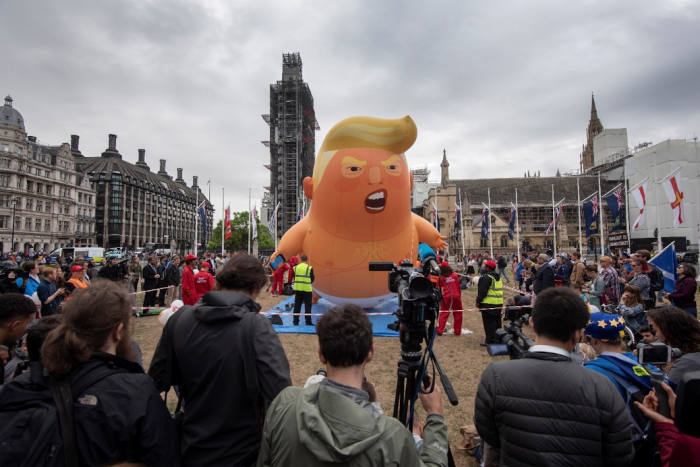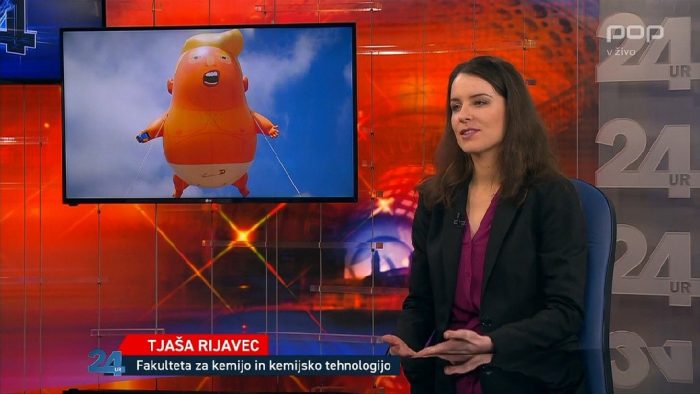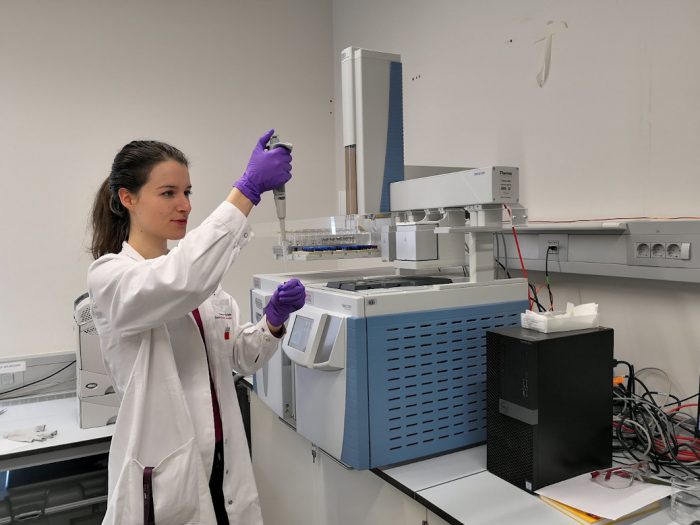Researchers at the Heritage Science Laboratory Ljubljana (HSLL) of the Faculty of Chemistry and Chemical Technology, researchers at University College London (UCL) and conservators at the Museum of London have collaborated in interdisciplinary research in the field of heritage science, studying the stability and risk of displaying the 6-metre high and 3-metre wide polyvinyl chloride (PVC) inflatable. The results of chromatographic analysis of the material, studies of accelerated degradation of model samples and modelling diffusion and evaporation enabled the conservators to assess the environmental risks to the object during storage and exhibitions.

The famous balloon was first flown in 2018 over the Parliament Square in London during the visit of Donald Trump, then president of the USA, who is depicted as an orange baby in a nappy clutching a phone. Museum of London obtained the object after two years and contacted the researchers at the Heritage Science Laboratory Ljubljana (HSLL) and at University College London (UCL) for a better understanding of the long-term behaviour of the material and the effect of storage and display conditions on its degradation. Conservation, display and storage of the Trump Baby pose some complicated technical and ethical challenges. When speaking of long-term conservation, we must be aware of the stability of the polymer and the plasticizers, as well as the storage conditions for such an object.
Tjaša Rijavec, young researcher at the HSLL, analysed the material the Trump blimp is made of, and conducted a study of accelerated degradation to examine the stability of the plasticizers in the material. The reason is that loss of plasticizers causes a decrease of the flexibility, which can lead to deformation of the material and appearance of cracks. The collaboration between scientists from the HSLL and UCL and the conservators from the Museum of London resulted in the development of mathematical models describing the loss of plasticizer and creation of storage recommendations. The deflated blimp can be stored in airtight packaging, while short-term (one week to six month) exhibitions are possible indoors, since the scientific models do not foresee a concerning loss of plasticizers. These results have provided the conservators with the basis for an informed risk assessment for storage and display. HSLL is involved in an international project focused on the development of strategies for preventive conservation of objects made of poly(vinyl chloride), PVCare.
Tjaša had the opportunity to talk about how the collaboration took place, the work she did on the Trump Blimp and about some of the future research plans on the evening news on POP TV’s 24ur zvečer.

Museum of London staff recently reinflated the Trump baby blimp to test if it holds air, planning its upcoming display and move to the museum’s new location. Read more in this Guardian article.

